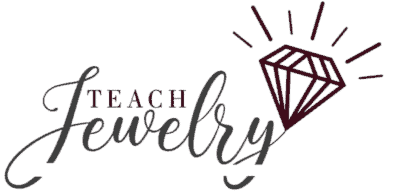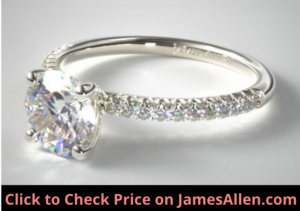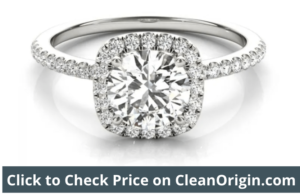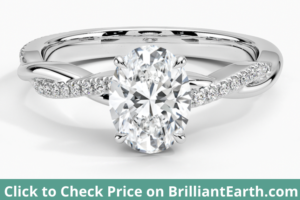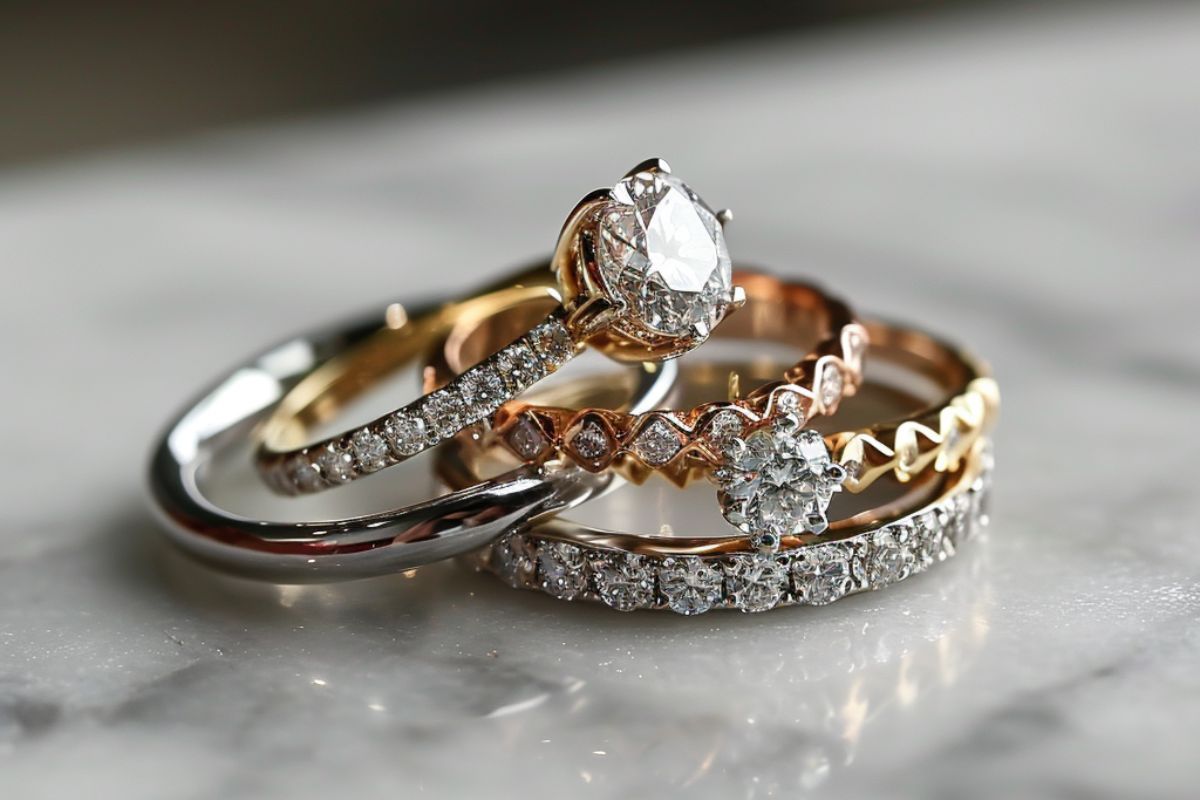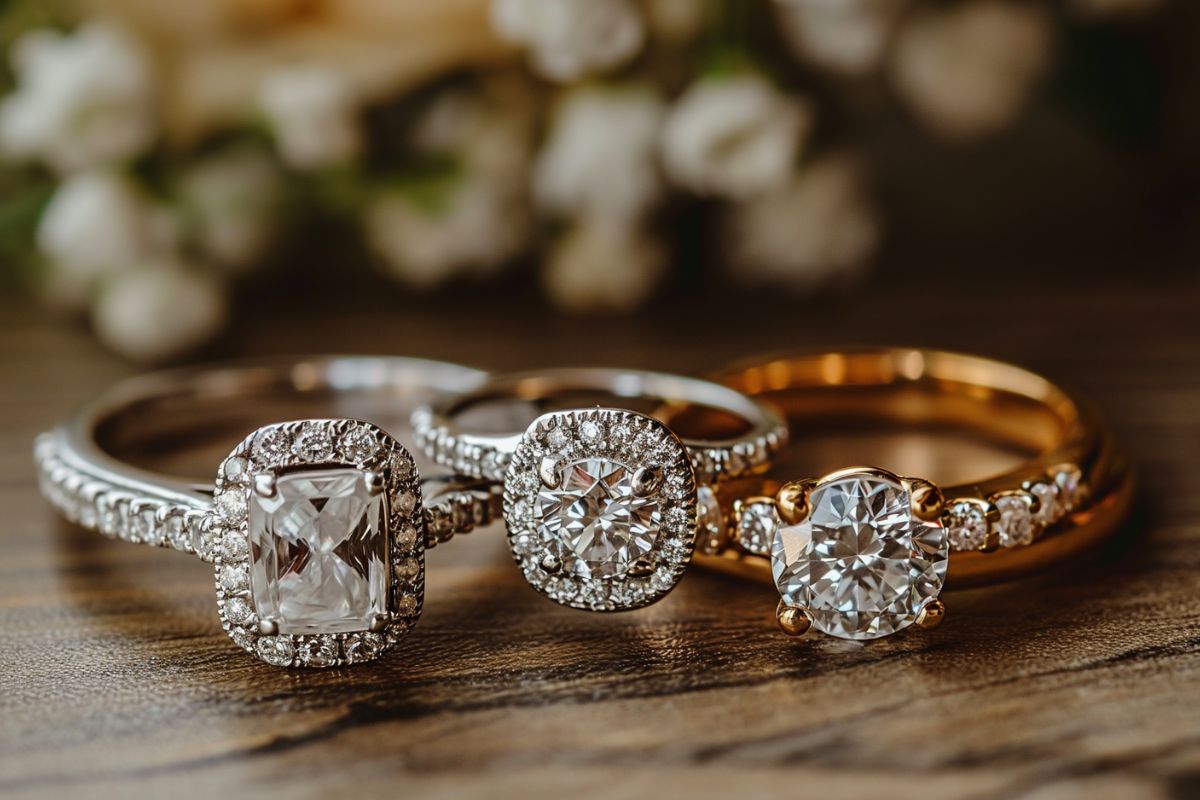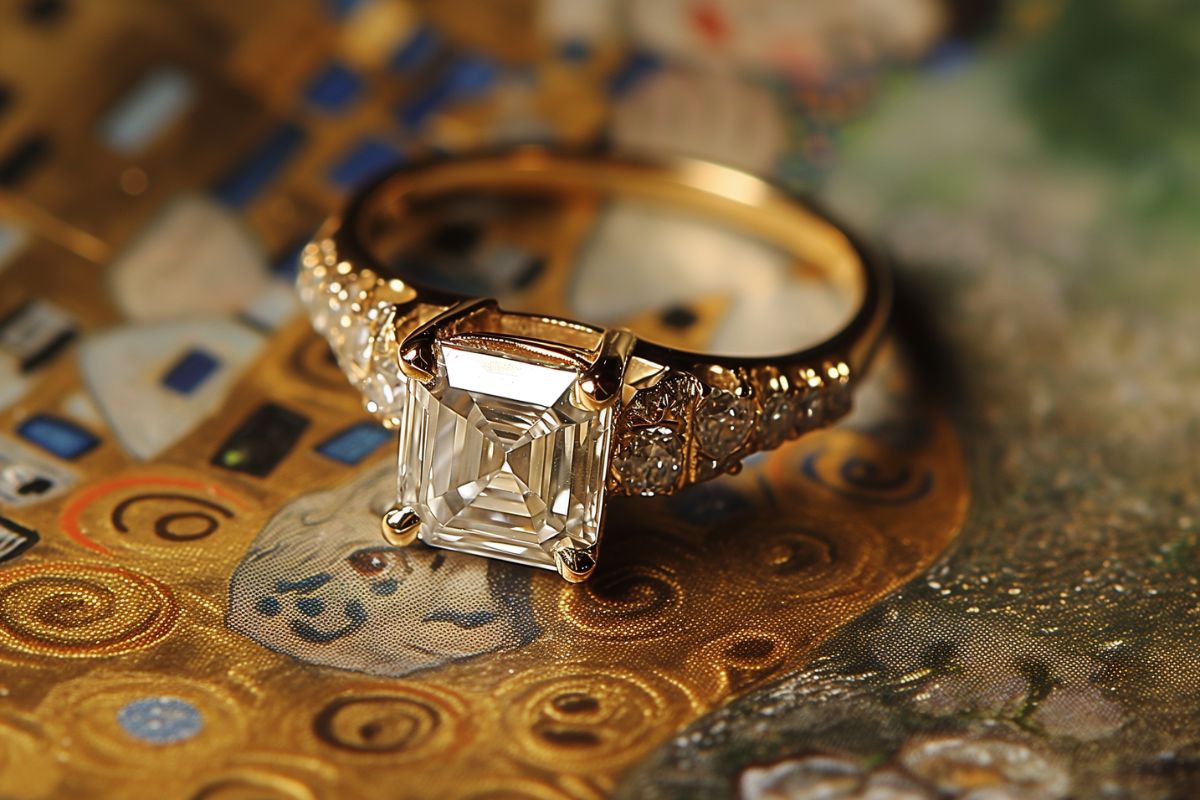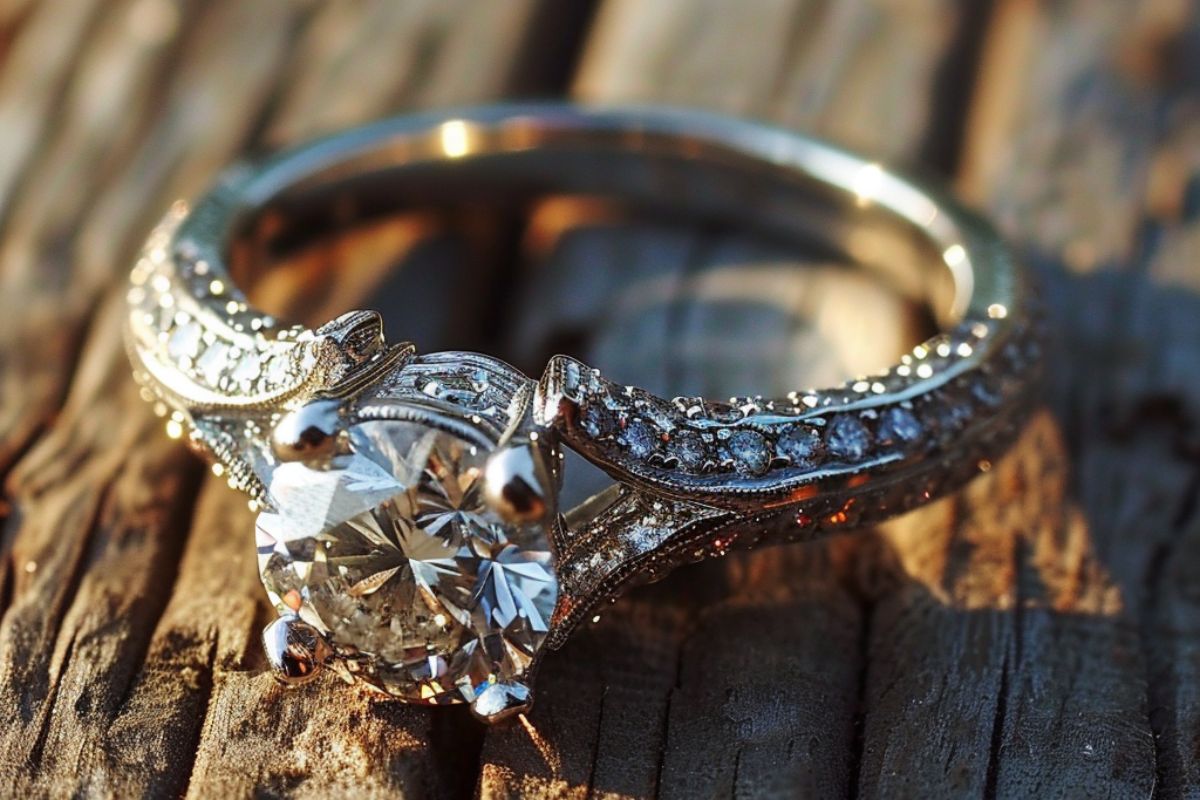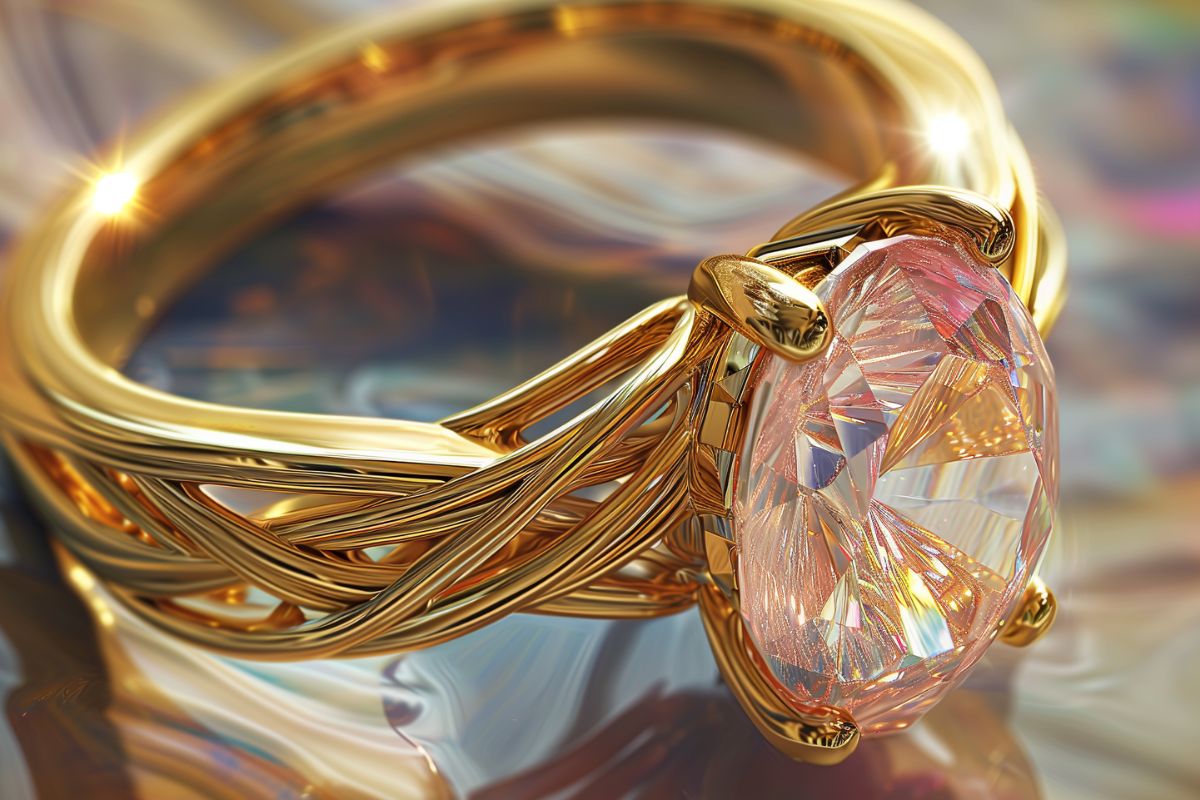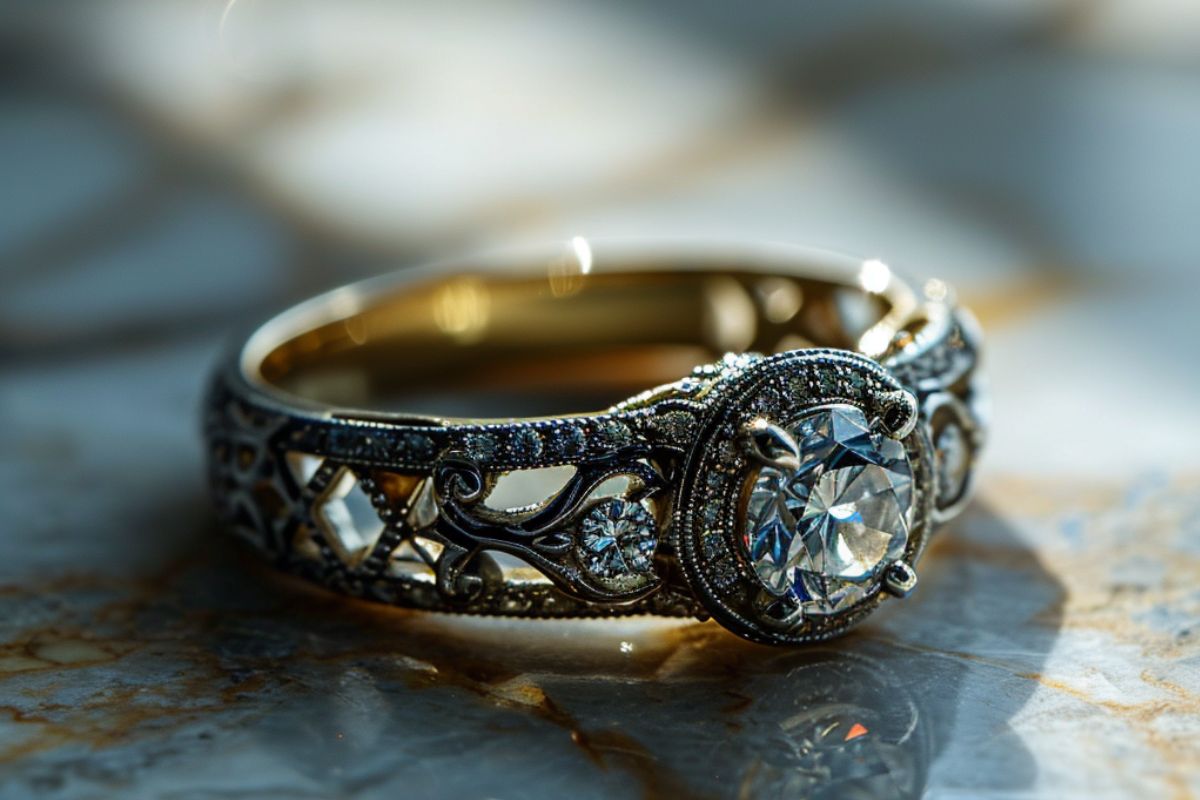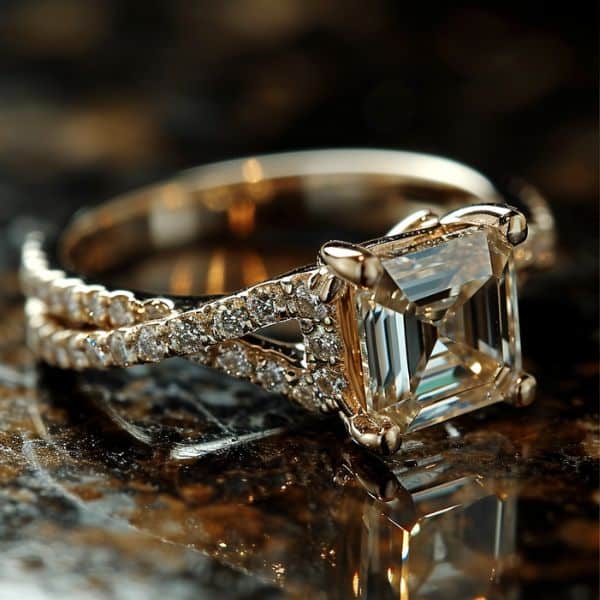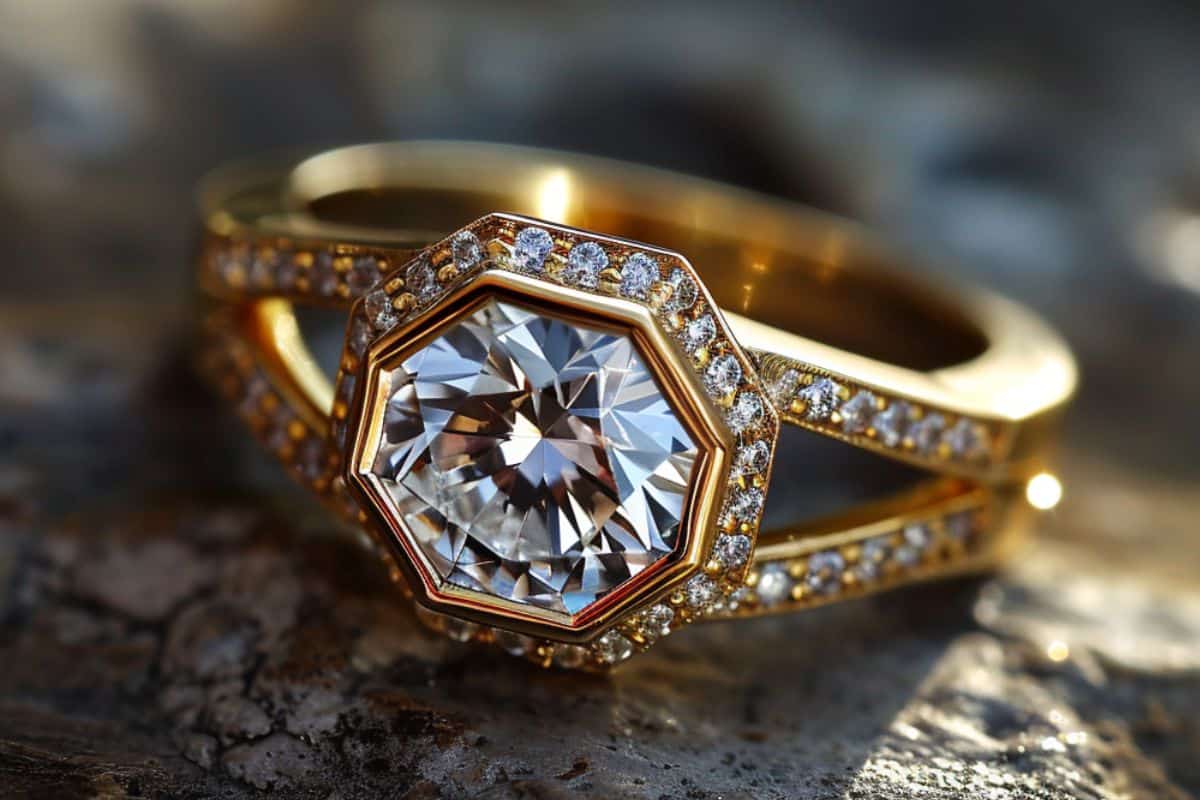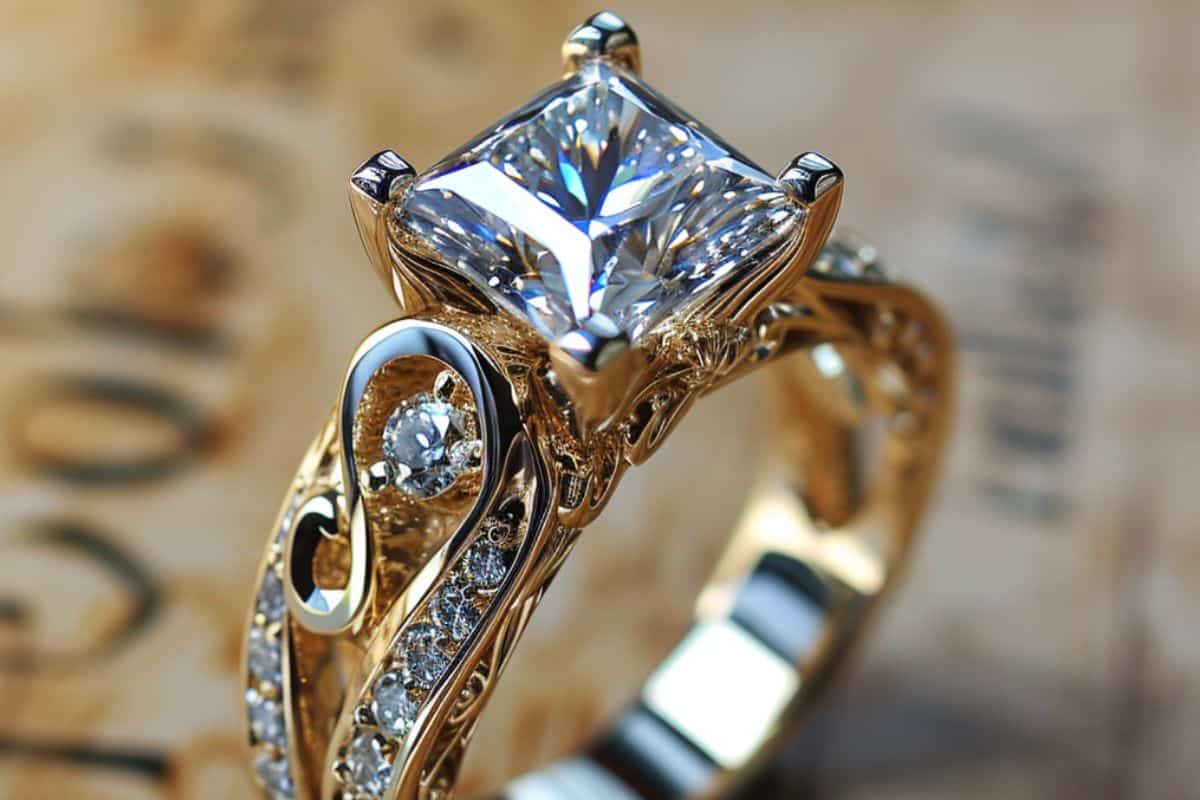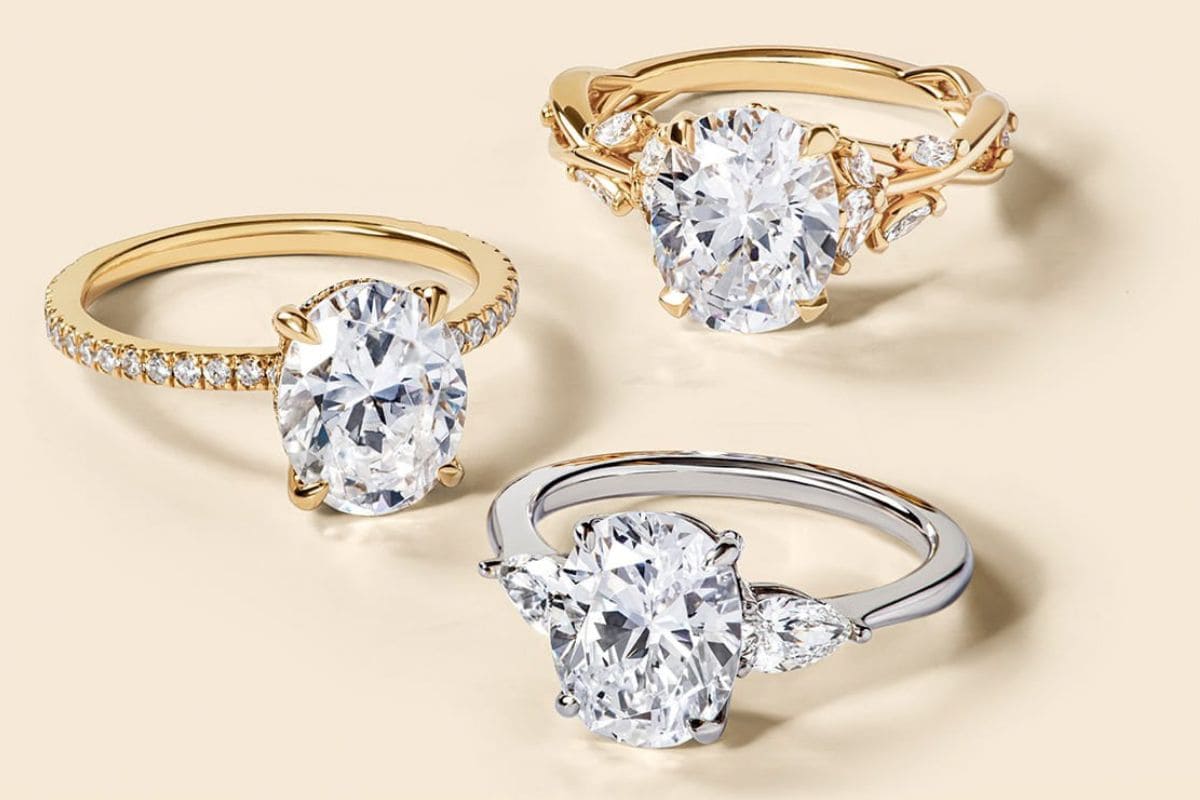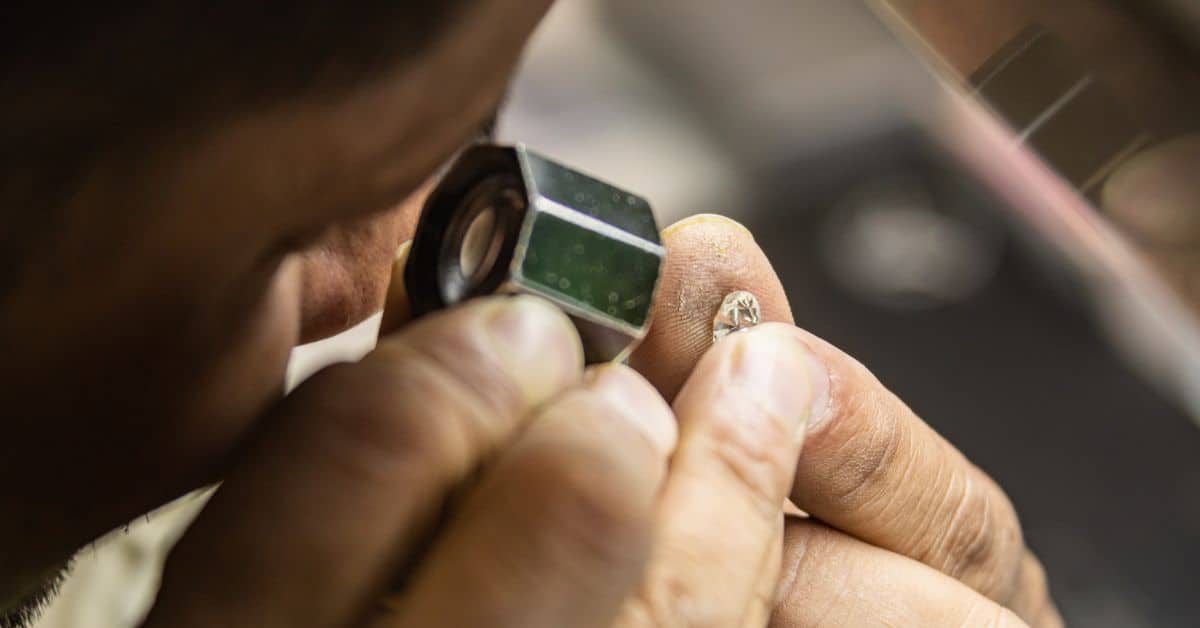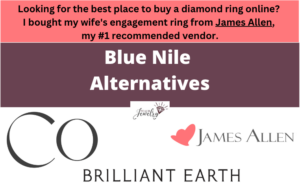
Blue Nile is one of the most popular online jewelry stores, with an inventory of more than 500,000 diamonds across 10 cuts.
Since its founding, Blue Nile has also welcomed competitors into the online jewelry, and many provide a similar experience on their websites and in showrooms.
I have personal experience working with the Blue Nile team and send many of my readers their way with full confidence.
But if you’re looking for alternatives, here are eight Blue Nile competitors to explore.
1. James Allen
James Allen is an online jewelry retailer founded in 2006. They offer many of the same lines of jewelry as Blue Nile, and the purchasing experiences mimic each other.
They are by far my number one recommended online jewelry store, and whenever a reader asks me where they should buy an engagement ring or other jewelry, I send them to James Allen.
In fact, it’s where I bought my wife’s engagement ring (a round-cut diamond in this setting), and I had an exceptional experience.
One area where they initially excelled over Blue Nile was their image and video technology. Brick and mortar stores used to dominate the jewelry business because buyers wanted to view the piece in person before buying such an expensive item.
So to provide the same certainty, James Allen invested in high-quality images and 360-degree video to showcase their diamonds and jewelry online.
Check out the high-quality image of an engagement ring below.
If you click to visit that product page on the website, you can rotate it to learn how it appears at every angle.
They even allow you to change the type of metal and view the piece in yellow or rose gold or platinum.
Until recently, a difference between James Allen and Blue Nile was James Allen sold lab-grown diamonds under their own brand, while the latter partnered with Lightbox Jewelry to do so.
But in 2022, Blue Nile began selling lab-grown diamonds under its brand name and now has close to 20,000 in its inventory.
At James Allen, there are more than 40,000 choices across all color, clarity, and cut grades.
Similar to Blue Nile, James Allen also allows you to create your own engagement ring by starting with a diamond or setting.
2. Clean Origin
Clean Origin is a leader in selling lab-grown diamonds. They don’t offer natural diamond jewelry.
The brand was founded in 2017 by industry veterans who knew younger consumers were interested in sustainable jewelry that didn’t carry some of the negative reputation the diamond industry has earned.
I’ve personally worked with the Clean Origin team, and they’ve been nothing but exceptional. When my readers are specifically interested in lab-grown diamonds, I often recommend they first explore this brand.
From engagement rings and tennis bracelets to diamond stud earrings and pendants, Clean Origin has stunning designs, like this halo setting with scalloped pave on the shank.
Notice how it appears identical to a natural diamond. That’s because even gemologists can’t tell the difference when viewing them with the naked eye.
That’s one of many pros of lab-grown diamonds.
The other advantages are sustainability and price. They cost close to half of natural diamonds, so you can select a much higher carat weight, improved color or clarity grades, or a more elegant setting.
The downside is many buyers want an authentic, earth-created diamond.
Even though they have the same chemical structure, there’s lower demand for this type of diamond.
An area where Clean Origin surpasses Blue Nile is its return policy. If you aren’t satisfied with your choice, you can return it within 100 days for a full refund.
3. VRAI
VRAI is an alternative to Blue Nile that was founded in Los Angeles, California in 2014.
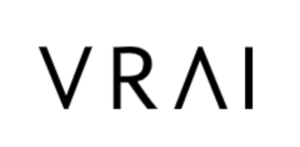
They’re focused on sustainable diamonds, so they only offer lab-grown gems.
Their mission includes “No mining. No emissions. No guilt.”
Although VRAI’s selection isn’t as expansive as Blue Nile’s, you’ll still find a range of jewelry such as earrings and bracelets.
Another difference between VRAI and Blue Nile is VRAI diamonds aren’t graded by the Gemological Institute of America (GIA), which is considered by many the most prestigious organization for certifying the quality of diamonds.
Instead, VRAI’s diamonds are graded by a gemologist who has been certified by the GIA. This is an important distinction because it means VRAI’s diamonds aren’t graded by a third-party.
That doesn’t mean you shouldn’t trust the report, but many buyers want a third-party validation of its color, cut, and clarity grades.
Whenever a reader asks about which diamond they should buy, I always recommend one with a GIA report.
An area where VRAI excels is the designs of their settings. One in particular I recommend checking out is two tone settings for engagement rings.
A two-tone setting features a combination of metals. VRAI’s classic two tone setting is composed of 18k yellow gold and platinum or 14k rose gold and platinum.
Here’s an image with a round-cut diamond on top.
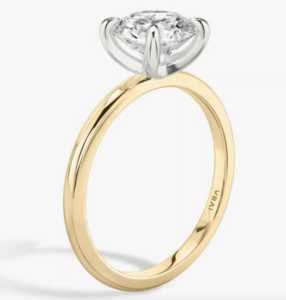
Its purpose is to enhance the ring’s shine and offer a twist on the classic design. Instead of a classic solitaire with one type of metal, there’s a hint of another shade.
4. Diamonds Direct
Diamonds Direct has a network of physical stores in addition to its online experience.
The company was founded more than 60 years ago and now has 24 stores across cities like:
- Richmond, Virginia
- Pittsburgh, Pennsylvania
- Raleigh, North Carolina
- Jacksonville, Florida

Boasting more than 50 designers and 3,000 engagement ring mountings per store, they offer a personalized experience, where you can connect with jewelry consultants to learn about the qualities of diamonds you’re considering.
This is an advantage that many of the best online diamond stores miss, though many make up for it through virtual appointments.
Most buyers begin the process of searching for jewelry with little knowledge of the four Cs of color, cut, and clarity, and color.
By connecting with a consultant like the ones at Diamonds Direct, they can walk you through each aspect of a diamond’s grading report and explain the pros and cons of each cut.
I was talking to a friend of mine about his experience buying his fiancé’s engagement ring from Diamonds Direct. He had nothing but a positive experience, and it’s a gorgeous ring.
You can create your own engagement ring, and like many of the vendors on this list, Diamonds Direct sells wedding rings.
It’s a popular choice to purchase both from the same vendor, so it’s a matching set.
5. Tiffany & Co.
Tiffany & Co, known as Tiffany’s, is a luxury jewelry retailer.
They’re one of the largest in the industry with a brand that stands for prestige.
Compared to Blue Nile, Tiffany’s has more product lines. This includes:
- Fine watches
- Home accessories like bar and drinkware
- Fragrances
- Housewarming gifts
They’re most famous for creating the Tiffany setting. It’s a six-prong solitaire ring with a knife-edge band.
To illustrate, here’s the classic design.
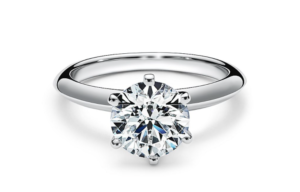
Introduced in 1886, it was an anomaly at the time, but it soon became the standard.
The setting is a patented design, so although other jewelry companies have mimicked the style, there’s only one true Tiffany setting.
But Tiffany’s prestige comes with a higher price tag.
I created diamond rings with similar qualities on Tiffany’s and Blue Nile’s websites.
The diamond had the following qualities:
- Clarity: VVS1
- Carat weight: 1.01
- Color: G
- Cut: Excellent
At Tiffany’s, the ring sold for $14,600.
At Blue Nile, it was priced at $7,356.
I compared another set of engagement rings from the two brands. They both had a one-carat diamond with the same grades and a petite micropave setting.
The ring from Tiffany’s cost almost three times as much as the one from Blue Nile.
Tiffany’s sells high-quality jewelry and offers tremendous service, but if you’re looking for value, try an online vendor like Clean Origin or James Allen.
6. Ritani
Ritani is an online jewelry store founded in 1999.

There are more than 100,000 round cut diamonds in their inventory, both earth-grown and lab-created. You’ll also find the same cuts as their competitors, from emerald and marquise to princess and cushion.
An area where Ritani excels is the online experience. Specifically, the website is intuitive, easy to navigate, and perfect for someone who’s new to the process of buying jewelry online.
When you’re creating your own engagement ring, it’s easy to filter diamonds by the most important qualities. Narrow the selection by shape, price, carat and more.
Once you’ve reduced the selection, click “Recommended” in the navigation bar to see their gemologist-approved algorithm’s recommendations.
I’ve highlighted where to find that feature in this image.
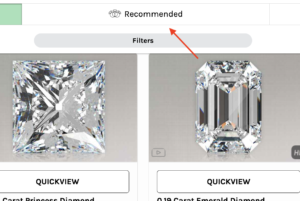
It’ll show diamonds with the right blend of the four Cs, which is how you find the best value.
Ritani’s design options don’t stop with engagement rings. The feature is also available for earrings and pendants.
They also promote price transparency. You can check out a breakdown of the costs of a diamond from the wholesaler, the operational costs involved, and the margin Ritani earns on each sale.
If you find a diamond from Blue Nile or another one of their competitors with the same grades that costs less, they’ll try to find a similar one at a lower price.
My only word of caution is to make sure the comparable diamond was graded by the same institution, whether the GIA, International Gemological Institution, or GCAL.
7. Brilliant Earth
Brilliant Earth sells many of the same types of jewelry as Blue Nile, including:
- Engagement rings
- Men’s and women’s wedding rings
- Gemstones
- Fine jewelry
They’ve branded themselves around eco-friendliness and responsibly-sourced diamonds that go beyond the standards set forth by the Kimberley Process.
Instead of only ensuring their diamonds aren’t used to finance civil wars, they abide by other criteria that focus on working conditions at mines and how their operations affect the environment.
Below is a list of a few of Brilliant Earth’s core principles.

These high standards mean you’ll often pay a premium for Brilliant Earth over Blue Nile.
For example, I compared prices for round-cut diamonds with the following qualities:
- Carat weight: 1.00
- Color: E
- Cut: Very good
- Clarity: VVS2
At Brilliant Earth, prices start at $8,410.
At Blue Nile, there are options starting at $7,476.
You’ll have to decide if the higher prices at Brilliant Earth are worth it, but you can have confidence about the quality of their pieces.
One of my favorite lines from Brilliant Earth is their pave settings, like this petite twisted vine setting.
I actually bought my wife’s wedding ring from Brilliant Earth, and we were both incredibly satisfied with the purchase.
It was this half-eternity ring.
To learn more, read my full review of Brilliant Earth.
Uncovering Choice: Blue Nile Versus Alternatives – A Q&A Insight
Q1: What are the primary factors that differentiate Blue Nile from its alternatives and competitors?
A1: Blue Nile is often recognized for its wide selection of diamonds and competitive pricing. Its alternatives might offer different technology for viewing products online, more customization options, or a focus on lab-grown diamonds.
Q2: How does the technology used by James Allen for showcasing jewelry online compare to that of Blue Nile?
A2: James Allen employs high-definition imagery and a 360-degree view technology allowing customers to inspect the jewelry closely, providing a more interactive online shopping experience compared to Blue Nile.
Q3: What are the advantages and disadvantages of purchasing lab-grown diamonds from Clean Origin compared to natural diamonds from Blue Nile?
A3: Lab-grown diamonds from Clean Origin are often more affordable and environmentally friendly, while natural diamonds from Blue Nile come with a long history and natural rarity which some buyers may prefer.
Q4: How does the certification process of diamonds at VRAI differ from that of Blue Nile and why might this be significant for buyers?
A4: VRAI offers diamonds with a zero carbon footprint and follows a different certification for sustainability compared to Blue Nile. This might appeal to environmentally-conscious buyers.
Q5: How do the design options at VRAI and Blue Nile compare, especially in terms of settings for engagement rings?
A5: While Blue Nile offers a wide range of design options, VRAI provides a curated selection with a focus on modern, minimalistic designs, offering a different aesthetic for engagement rings.
Q6: What considerations should buyers have in mind when choosing between online and brick-and-mortar stores like Diamonds Direct and Blue Nile?
A6: Choosing between online and physical stores depends on personal preferences, budget, and the importance of seeing the jewelry in person before purchasing.
Q7: How does the sustainability focus of VRAI and Clean Origin compare to the offerings at Blue Nile?
A7: VRAI and Clean Origin have a strong focus on sustainability, offering lab-grown diamonds and eco-friendly practices, which contrasts with Blue Nile’s traditional approach of offering natural diamonds.
Q8: How do the return policies of Blue Nile and its alternatives like Clean Origin compare?
A8: Clean Origin has a more favorable return policy compared to Blue Nile, offering a 100-day return window for a full refund, while Blue Nile provides a 30-day return window.
Q9: In what ways do the partnerships and brand collaborations at Blue Nile compare to the in-house or exclusive offerings at alternative stores?
A9: Blue Nile’s partnerships and brand collaborations may offer a wider variety of styles and designs, while in-house or exclusive offerings at alternative stores may provide a more unique or curated selection.
Q10: How do the price points and value propositions of Blue Nile and its alternatives compare, especially in terms of cost per carat and customization options?
A10: Blue Nile is known for competitive pricing, but alternatives might offer better value in terms of customization, unique designs, or sustainability, which could appeal to different segments of buyers.

Jacob Clarke
Jacob Clarke is the founder of TeachJewelry.com.
He earned an Applied Jewelry Professional Diploma from the Gemological Institute of America (GIA) and now brings you essential information about diamonds, settings, and more.
Jacob has consulted with leading jewelry brands, and his work has been cited in Clean Origin, Diamond Nexus and industry publications.
He's also a member of the International Gem Society.
He enjoys discussing jewelry with readers, so contact him with any questions at jacob.clarke@teachjewelry.com.
